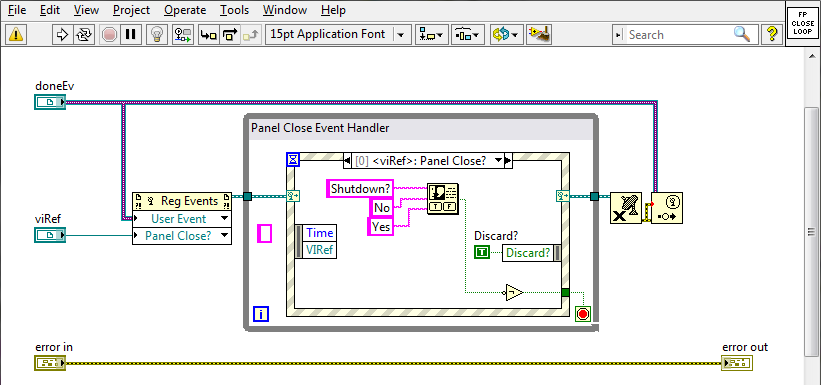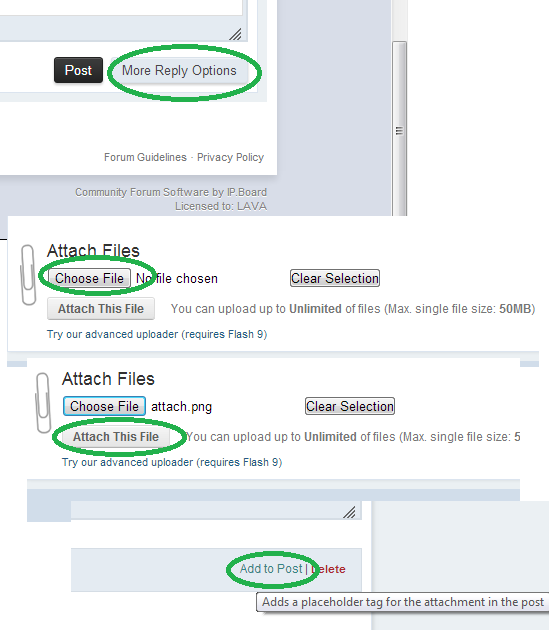-
Posts
335 -
Joined
-
Last visited
-
Days Won
13
Content Type
Profiles
Forums
Downloads
Gallery
Everything posted by todd
-

XML-RPC Server for LabVIEW
todd reviewed Mark Smith's file in Remote Control, Monitoring and the Internet
-

Need help: want to build a real-time GPS tracker for multiple movers
todd replied to Aristos Queue's topic in Hardware
Can you count on cell data? Guides can carry Android or iOS phones. BLE beacons can be placed at doorways. Just need a simple change to a proximity app that emails or texts in-proximity beacons to central. -
https://github.com/wirebirdlabs/LabVIEW-User-Events-Tips-Tricks-and-Sundry
-
Can't find the diagram, but I used composition for communication with a family of devices. Device class contained "transport", "firmware version", "key map", etc. Transport (serial VISA, FTDI dll, custom .net dll) had read and write methods - no abstract parent. Firmware Version parent class had specific functions (one per Byte, kind of thing) for version 1. Version 2 inherited from version 1 - some overrides, some extras. Version 3 inherited from version 2, etc. Key map turned scanned ADC arrays into other things. It worked very well, even at six firmware versions. Selection of each type of object was done via enum/case statement. This allowed direct selection and trial-and-error detection of each object in the device.
-
On the arduino side: LIFA is a good reference design. Use it to roll your own. Check out LINX, too: https://www.labviewhacker.com/doku.php?id=libraries:linx:linx
-
If you are sending ASCII data, check the termination characters.
-
https://www.google.com/#q=google.com
-

Plugins that implement their own command set
todd replied to ned's topic in Application Design & Architecture
I've seen one with a variant attribute table. "Get variant attributes" with no name returned the list of commands. Using a command name returned parameter and return value information via type descriptors. Another one used xmlrpc as the inter-platform pipe. A "query" command returned the list of functions. -
LIFA is a good starting point. It's worth looking at. It's a good reference for fixed-length binary serial packets. Make sure the checksum resets, though.
-

Experience with "Separate Compiled Code From Source"? (LV 2010)
todd replied to Rob Calhoun's topic in LabVIEW General
I jumped into the middle of two projects and converted them to subversion (I miss Hg!) and "separate". No discernible issues. -

Library & Class Naming Convention Advice
todd replied to MartinMcD's topic in Application Design & Architecture
"Me, too", on this one. lvlib for namespacing and encapsulation. Short names for each class and method. One file-system folder per class and it's methods. Virtual folders for grouping by functionality within classes and libraries. -
This post has been promoted to an article
- 1 reply
-
- script node
- root
-
(and 1 more)
Tagged with:
-
After modifying Jack's EventsAndSundry vi #02, I must amend my statement on the NI forum. If a dynamic event is registered but not handled, that does not directly cause a leak. The leak starts if either: the loop in which the event structure resides stops; or the event structure handles events slower than they are generated.
-

Suppose we limited 1 event structure per block diagram?
todd replied to Aristos Queue's topic in LabVIEW Feature Suggestions
I neglected to answer the second question: It wouldn't hurt much at all. -
For reference, here is the cross-post: http://forums.ni.com/t5/LabVIEW/Help-opening-a-mat-file/m-p/2647099#U2647099
-

Suppose we limited 1 event structure per block diagram?
todd replied to Aristos Queue's topic in LabVIEW Feature Suggestions
Download Jack's presentation (all VIs, no powerpoint), here: https://github.com/wirebirdlabs/LabVIEW-User-Events-Tips-Tricks-and-Sundry "Download ZIP" button -

Suppose we limited 1 event structure per block diagram?
todd replied to Aristos Queue's topic in LabVIEW Feature Suggestions
-

Suppose we limited 1 event structure per block diagram?
todd replied to Aristos Queue's topic in LabVIEW Feature Suggestions
I've used one ES for UI, and another for dynamic events. But I usually push the dynamic ES down to a subVI. -

The nightmare that is renaming a class and its folder
todd replied to GregFreeman's topic in Object-Oriented Programming
TortoiseSVN's "repair move" works, but it's a manual process. In the commit dialog, right-click the "missing" file and delete it. Select both the deleted (old name) file and the added (new name). Right-click and select repair move. -

How to set the network device on multi LAN system
todd replied to spaghetti_developer's topic in LabVIEW General
If you are on Windows, you may want to look at the "route add" command. -

transparence color on customizing controls
todd replied to spaghetti_developer's topic in User Interface
Maybe double-check which layer of the button you're importing to. Or if it's just the "decal". System buttons have six states, right? Four for Modern and Classic. -

The nightmare that is renaming a class and its folder
todd replied to GregFreeman's topic in Object-Oriented Programming
When moving LV entities on disk, I always use the Files tab of the project explorer. -
If I understand what was described above, this may be a useful data point. In 2013: fpga.vi writes data to a typedef cluster indicator rt.vi reads the fpga's typedef cluster indicator and writes a psp variable of the same type pc.vi reads the psp variable If the RT build spec has "Disconnect type definitions" selected, everything works. If typedefs are not disconnected, the RT's psp-write does not put data on the network.




